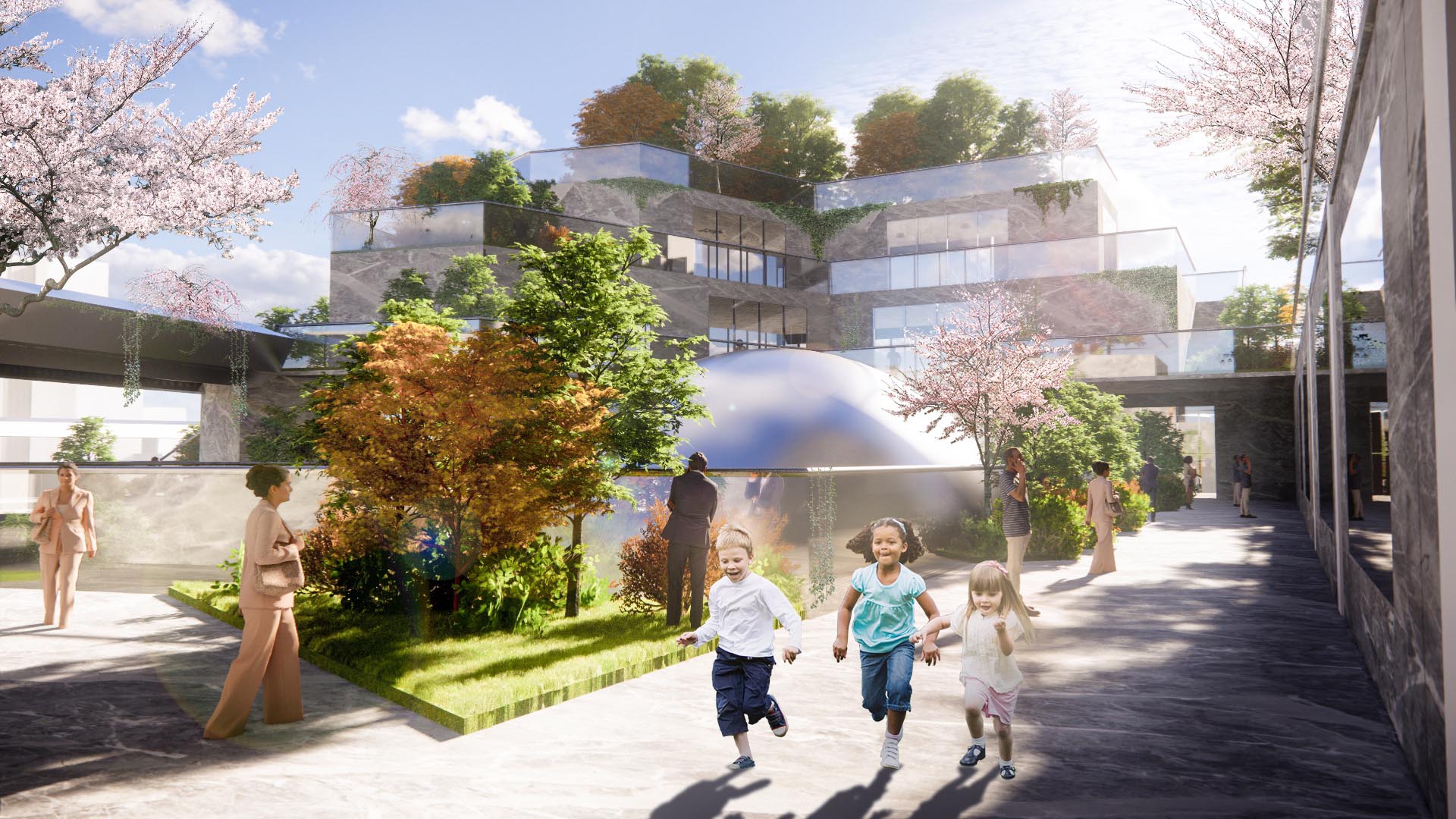This is a reimagining of urban lifestyles, seeking new breakthroughs in modern urban public spaces. The design of Foshan Hongwang Headquarters Building in Guangzhou has prompted us to propose a groundbreaking proposition for future urban development, marking a milestone where urban expansion transitions from confronting to balancing with our essential natural environment. Deterritorialized landscape spaces stimulate the regeneration of new urban spatial patterns, guiding us back to more ecologically integrated natural environments.
A naturally evolving urban landscape will become the most deterritorialized public space within cities. Yet rural nature persistently resists capitalist urbanization. Nature possesses life attributes akin to humans – from primordial connections where plant life intimately intertwines with human activities. The more primitive the activities, the stronger these connections become. Urban civilization’s rapid expansion through prolonged de-ruralization has created an ever-expanding “civilized society” that distances us from our primal essence – that original state of natural growth. Modern capitalism has paradoxically generated a return-to-origin public space typology defined as parks. The emergence of parks symbolizes humanity’s initial shift toward rural-urban hybrid movements. However, these urbanized rural spaces differ from primordial nature, serving more as urban embellishments that lubricate city life while manifesting capitalist hedonism. Deterritorialized landscape spaces absorb parks’ primordial qualities, permeating urban fabrics to establish physical equilibrium and mutual supplementation between urban and natural spaces. This symbiosis renders artificial environments more natural while endowing natural elements with enhanced logic.
Long ago I read Byron’s verse:
“I live not in myself, but I become
Portion of that around me; and to me
High mountains are a feeling, but the hum
Of human cities torture: I can see
Nothing to loathe in nature, save to be
A link reluctant in a fleshly chain,
Classed among creatures, when the soul can flee,
And with the sky, the peak, the heaving plain
Of ocean, or the stars, mingle, and not in vain.”
– George Gordon Byron (1788-1824)
With total floor area of 41,742 m², Hongwang Headquarters Building is situated in Foshan’s Wenhan Lake Science Town development zone. Future urban spaces will increasingly interconnect with northern urban open landscapes. The architectural massing divides into north and south volumes through a central atrium spanning floors 1-4 (over 15,000 m²). Further segmentation creates human-scale spaces: northern commercial areas and southern leased office spaces, both organized around central courtyards forming an artificial valley-like structure. Visitors meandering through this “valley” experience shifting vistas across tiered pocket parks at various elevations – spaces inviting contemplation and communion with enveloping nature.
The horizontally expanding urban nature extends vertically along the tower’s southern facade. Small-scale courtyard spaces integrate with the south elevation, ascending to form a majestic vertical garden complex. Micro-landscapes on each floor provide oxygen-rich workspaces and outdoor leisure areas. Natural vegetation layers offer effective shading while enhancing indoor comfort. Interconnected staircases bridge elevated outdoor landscapes. These vertical courtyards create microclimate zones where flora and microorganisms form complete ecological chains. This low-carbon lifestyle framework establishes new future office paradigms, breaking traditional constraints of concrete confinement to achieve harmonious integration between human activity and nature – ultimately realizing an alternative spatial model for “working within nature”. The entire facade presents an urban landscape painting that elevates the city’s visual comfort.
The construction of Hongwang Headquarters Building proposes a new human-oriented urban development direction. Contemporary cities are woven from nature and masonry – their surfaces comprising both soft and hard textures. Urbanization’s focus on concrete structures has overshadowed primordial life forces embodied in forests and vegetation. Today’s cities witness an ongoing contest between plants and masonry. Relentless urban expansion eradicates earth-scented spaces, leaving us exhausted and irritable, drifting from original aspirations in capital pursuit. Yet vegetation’s softness, flexibility, and purifying qualities serve as urban antidotes – soothing metropolitan irritability. Returning to primordial nature becomes the contemporary urban utopia. We recommence from the “heart”, embracing valley-like spaces and reuniting with nature.
